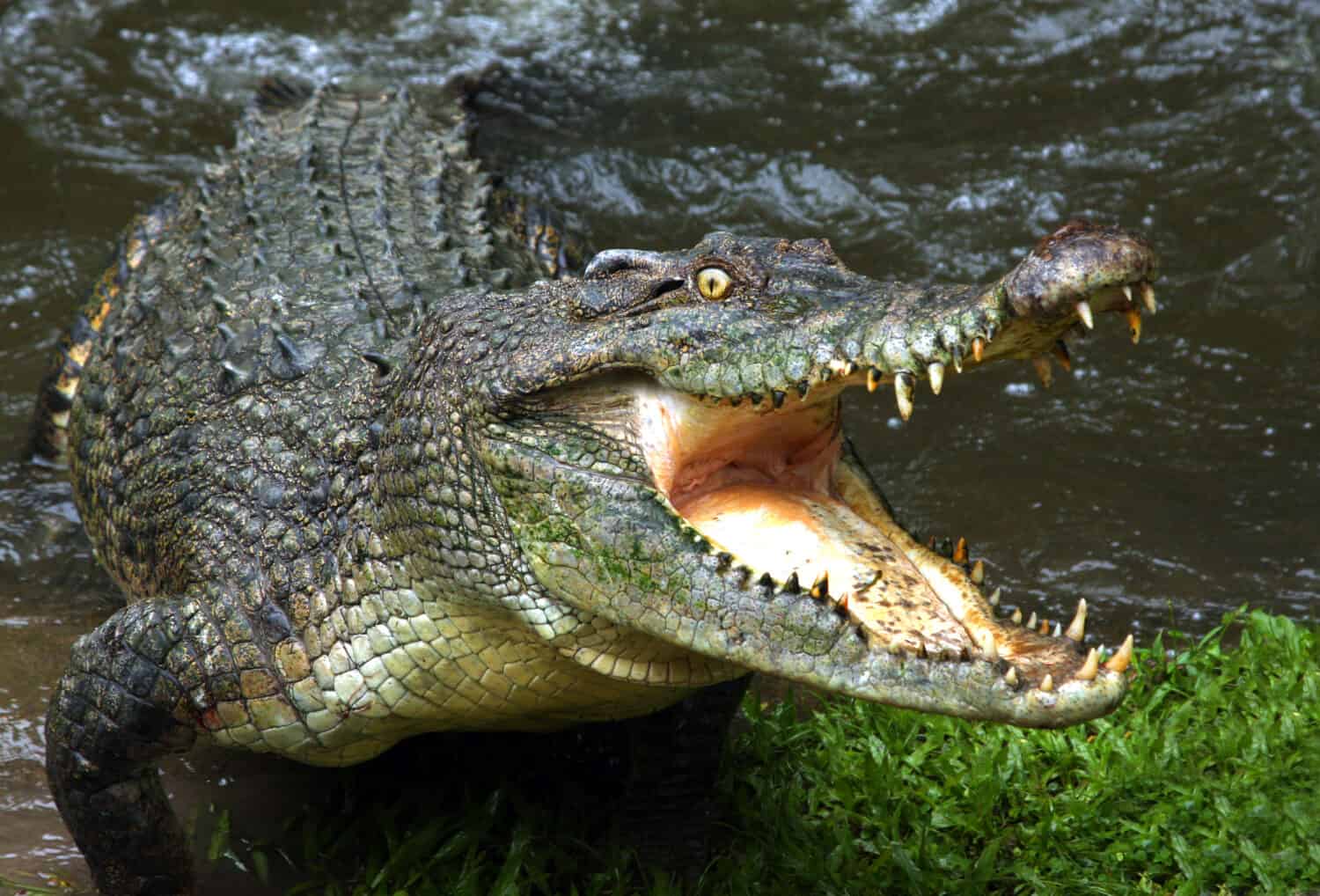

The viral video linked above features Dominator, the biggest living crocodile in the world and the second largest in existence. Weighing over 1 ton and reaching 6.1 meters in length, this saltwater crocodile is as big as a rhino. Dominator was caught in 2011 and lives in the Adelaide River.
Noah’s Trip Around Oz, a YouTuber who posts travel content, cruised the Adelaide River and was able to get close to Dominator, capturing the interaction on camera for viewers to witness. In the short clip, you can see this monster move through the murky water and muddy sand as passengers dangled what appeared to be a large pole with food on it.
While the crocodile didn’t display much aggressive behavior in the video, it’s still not advised to get this close to a wild crocodile, as they’re known to be aggressive and even deadly creatures. Keep reading to learn more about this massive reptile, from its various species and habitats to its average size and prey.
How big is the average crocodile?
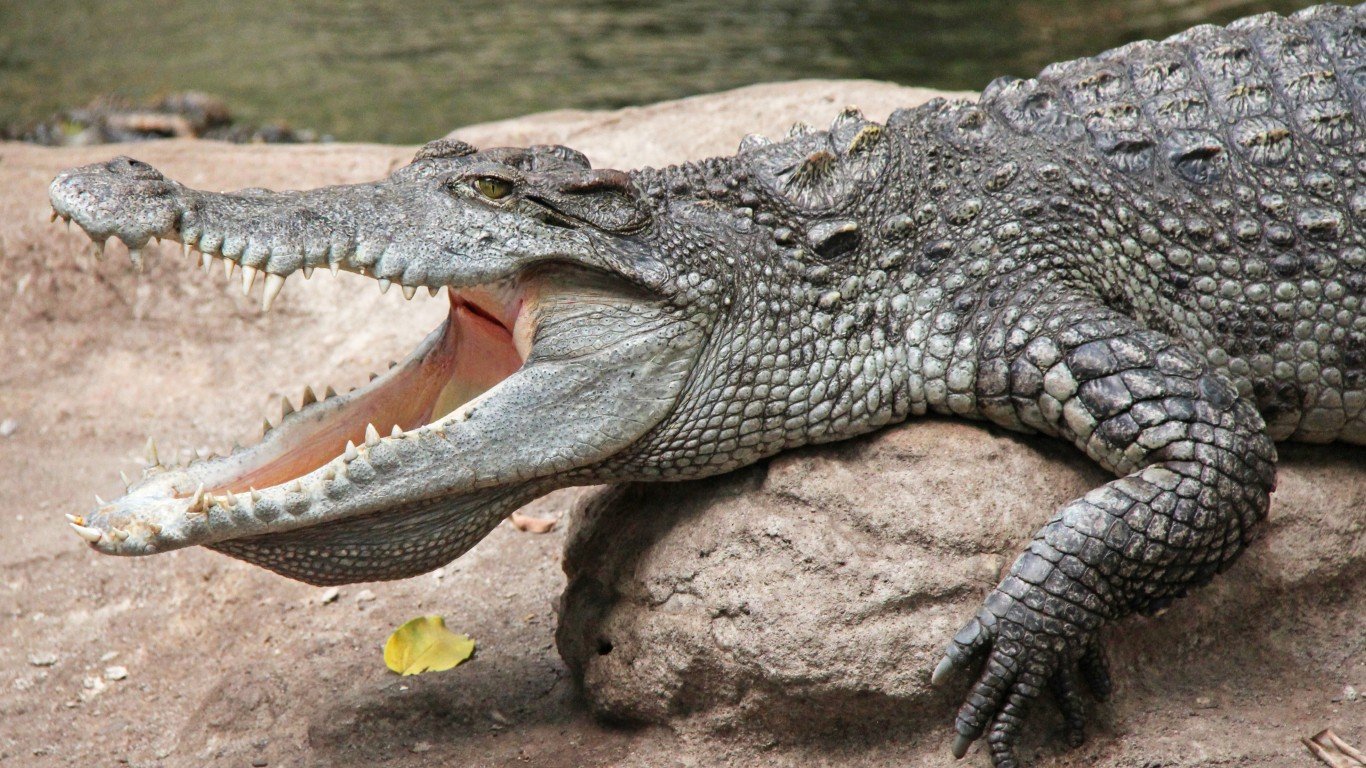
The size of an average crocodile depends on the species of crocodile. For instance, some of the dwarf types can be as small as 5 feet, while the largest types can reach 19 feet or more. In terms of weight, some of the largest crocodiles have reached over 2,000 pounds, with record-breaking extinct species surpassing that by eight times.
As with most other animal species, male crocodiles tend to be larger than females — by a significant amount. Even so, I don’t know about you, but this aggressive creature would scare me no matter how long it was, whether five feet or 20 feet.
How big is the largest measured crocodile?
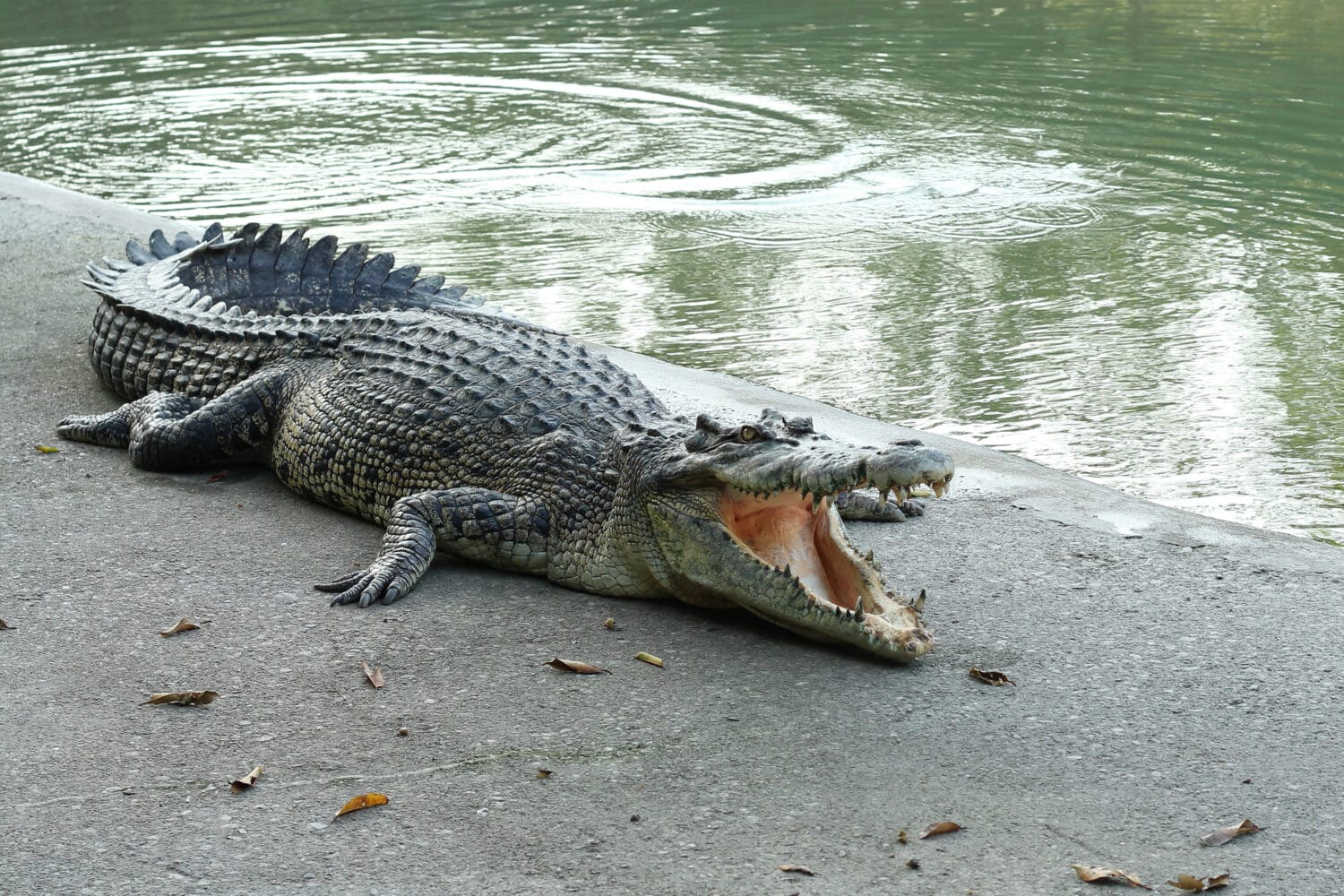
Dominator is known as the largest existing (and measured) crocodile in the world, standing at 20 feet in length and weighing over 2,200 pounds. However, based on fossil evidence, the largest crocodile ever measured was (possibly) Sarcosuchus imperator, nicknamed “Supercroc.”
Scientists are still unsure whether Supercroc was the largest crocodile to ever exist, but even so, this massive creature likely weighed nearly 17,600 pounds and was a whopping 40 feet long. That’s twice as long as Dominator and eight times as heavy. However, Supercroc was known to be a now-extinct genus of giant crocodile. Can you imagine running into that beast in the wild?
Where do crocodiles live?
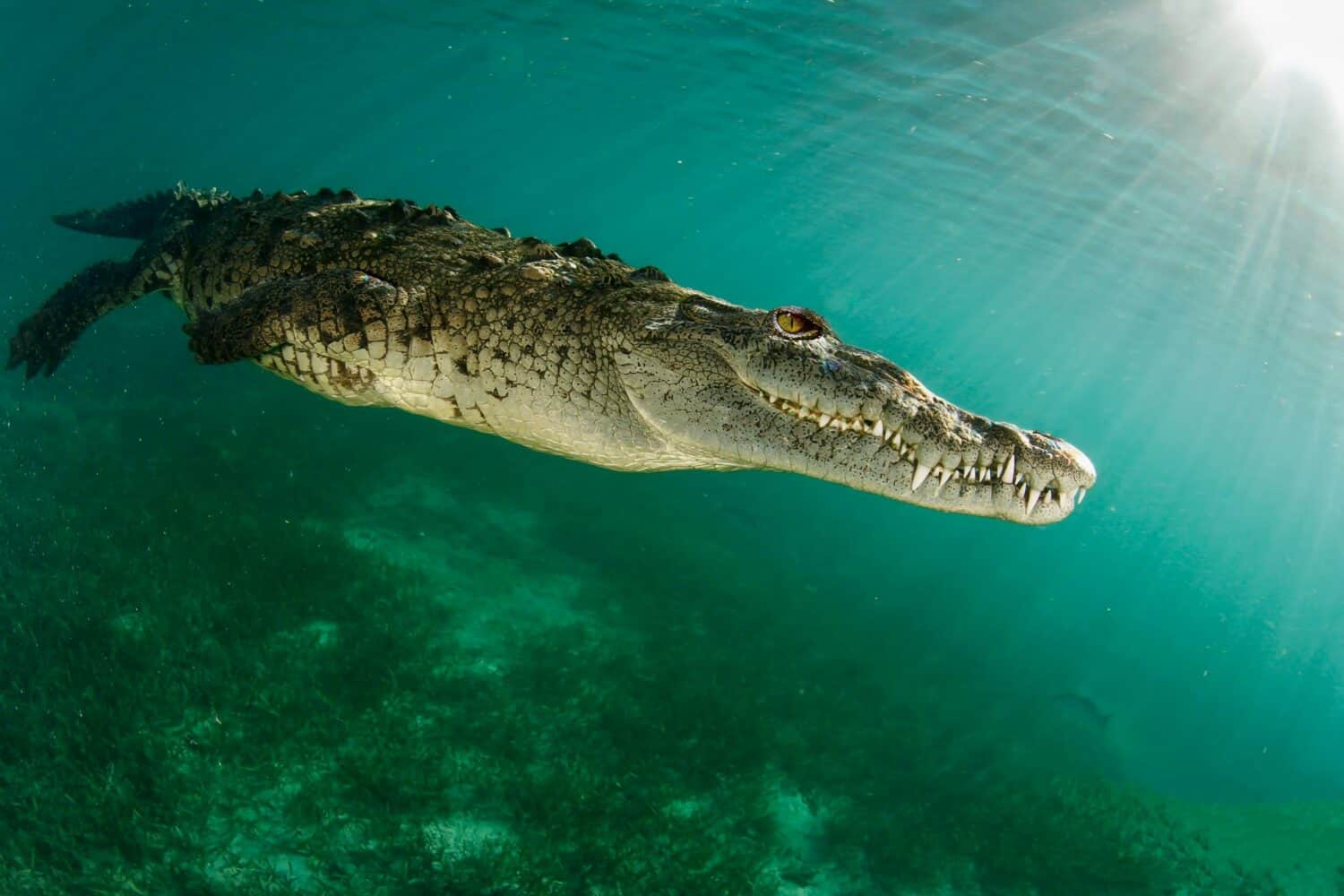
Crocodiles live all over the world, and their homes vary depending on the species. Mainly, you can find crocodiles on the southern tip of Florida (the only part of the U.S. that sees them), as well as across Africa, Asia, Central America, North America, Oceania, and South America.
In terms of habitats, these creatures spend most of their time in water. Most of the well-known crocodile species prefer brackish and saltwater regions like ponds, coves, and creeks in mangrove swamps, as well as tidal reaches and mouths, lagoons, waterholes, beaches, and oceans. However, some species of crocodiles will breed in freshwater while others live most of their lives in freshwater.
Types of crocodiles

There are various types of crocodiles worldwide, with 18 extant, recognized species. These include the following:
- American Crocodile, found in the U.S. and neotropical region
- New Guinea Crocodile, found in New Guinea
- Hall’s New Guinea Crocodile, found in New Guinea
- Freshwater Crocodile, found in Australia
- Saltwater Crocodile, found in Australia
- Borneo Crocodile, found in Borneo
- Siamese Crocodile, found in Southeast Asia
- Mugger Crocodile, found in the Indian subcontinent and southern Asia
- Philippine Crocodile, found in the Philippines
- Nile Crocodile, found in Africa
- West African Crocodile, found in West Africa
- West African Slender-Snouted Crocodile, found in West Africa
- Dwarf Crocodile, found in West Africa
- Osborn’s Dwarf Crocodile, found in West Africa
- Central Africa Slender-Snouted Crocodile, found in Central Africa and East Africa
- Cuban Crocodile, found in Cuba
- Morelet’s Crocodile, found in Mexico, Belize, Guatemala
- Orinoco Crocodile, found in Colombia and Venezuela
The largest species of crocodile is the saltwater crocodile, which is the type shown in the video above. Also called “Salties” by Australians, they’re known as the largest living reptiles. On average, they measure between 17 feet and weigh around 1,000 pounds. However, some have reached 23 feet and over 2,200 pounds.
Their habitats also differ depending on the species. For example, as its name suggests, the freshwater crocodile found in Australia frequents bodies of fresh water rather than salt water. On the other hand, the saltwater crocodile in Australia frequents bodies of salt water.
Crocodiles vs. alligators: what’s the difference?
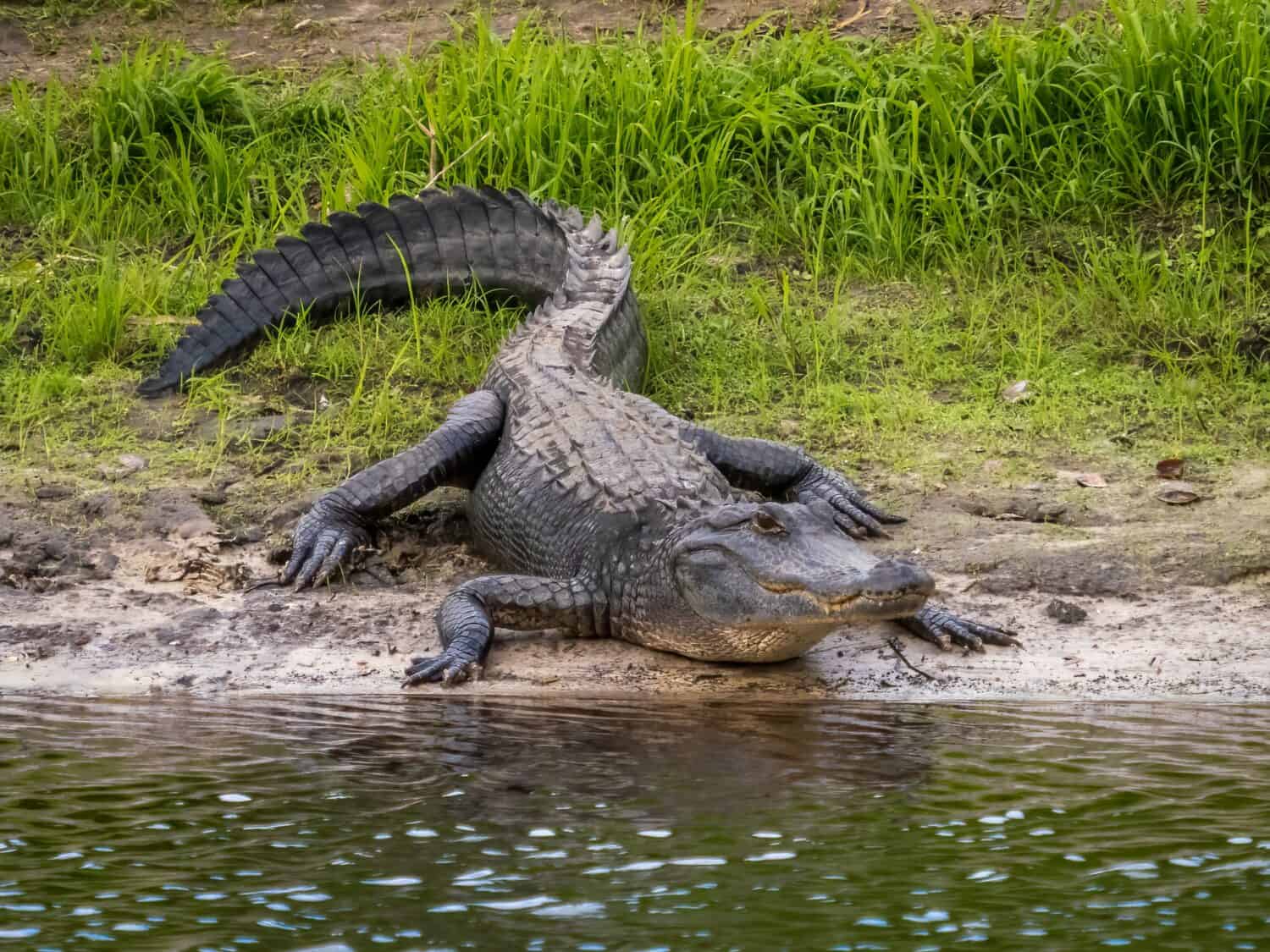
Many people confuse crocodiles with alligators, and for good reason. Both reptiles are from the reptilian order Crocodylia, but they’re not of the same families. Though they might look similar, they have many distinct differences, including:
- Size: Crocodiles are typically larger than alligators in both length and weight.
- Appearance: Crocodiles are usually grayish-green in color while alligators are darker. Additionally, crocodiles tend to have a narrow and angular snout, whereas alligators have a rounder snout.
- Locations: As you can tell from the list of crocodiles and their associated countries/locations above, crocodiles are more widespread than alligators, who really only reside in the U.S. and China.
- Habitats: Crocodiles usually prefer brackish or saltwater habitats while alligators thrive in freshwater. In the U.S., you can find alligators in swamps, streams, rivers, ponds, and lakes across states like Louisiana and Florida. As for crocodiles, you’ll likely find them in areas like marshes and mangroves in the southeastern tip of Florida.
- Lifespan: Crocodiles usually live longer than alligators — sometimes up to 70 years or more. Alligators, on the other hand, live between 30-50 years. In fact, some crocodiles have made beyond 100 years.
- Behavior: In terms of aggression, crocodiles take the cake. While alligators can — and sometimes do — attack humans, this is far more rare than with crocodiles. Many species of crocodiles are known to be aggressive toward humans, especially when they’re feeling territorial.
What do crocodiles eat?
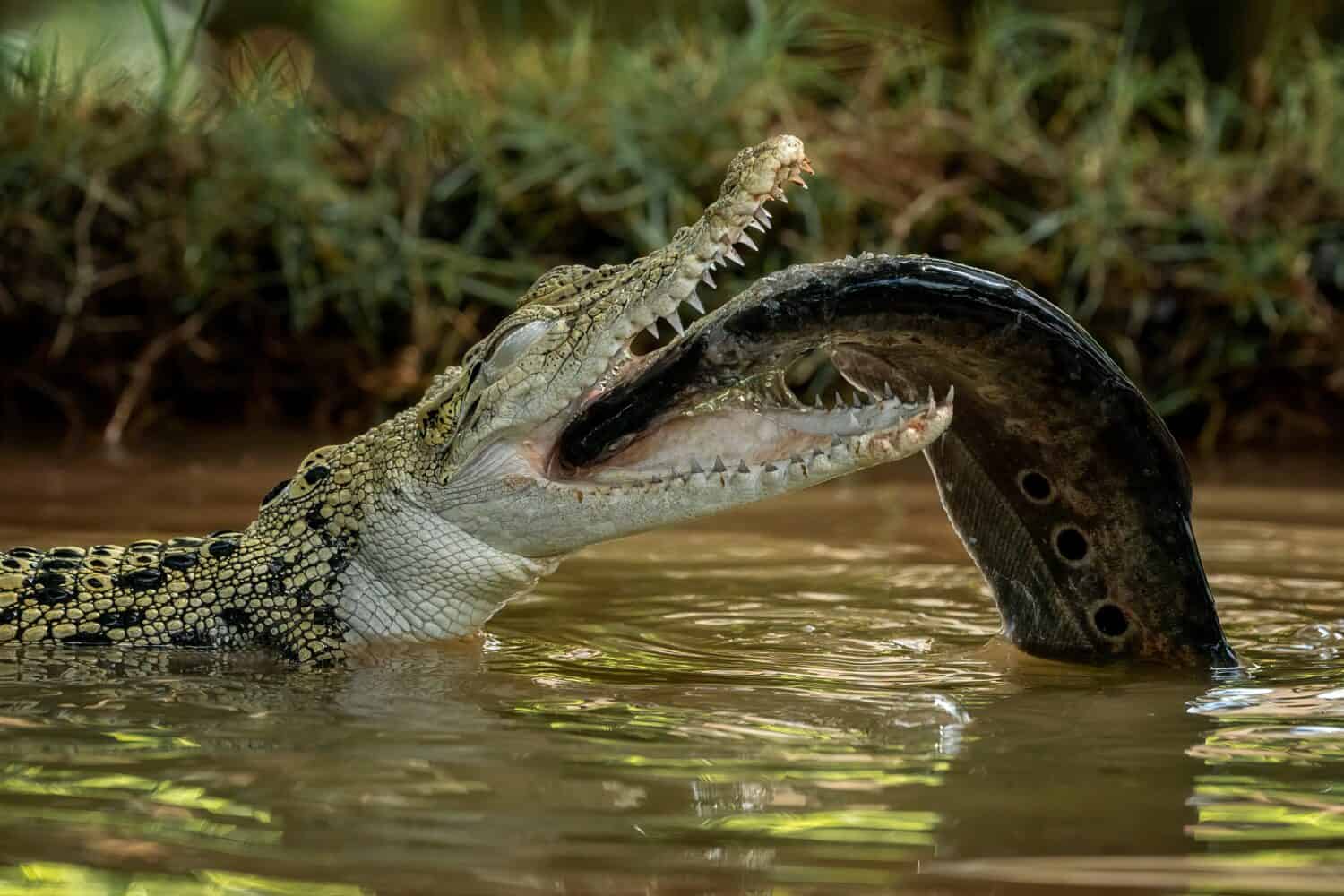
Crocodiles are carnivorous and remain at the top of the food chain. These massive reptiles will eat a variety of animals, including fish, frogs, lizards, crustaceans, deer, buffalo, and other small mammals. They typically hunt their prey by waiting for them to enter the water before striking and holding them down until they drown.
While crocodiles don’t typically look to hunt and eat humans, if mistaken for prey, humans can quickly become a hefty meal to these aggressive reptiles. This is because the reptile is an opportunistic hunter, meaning it will essentially prey on any animal that enters its territory.
You can assume crocodiles in the U.S. would feast on one of the largest fish ever caught in Florida.
Are crocodiles aggressive?
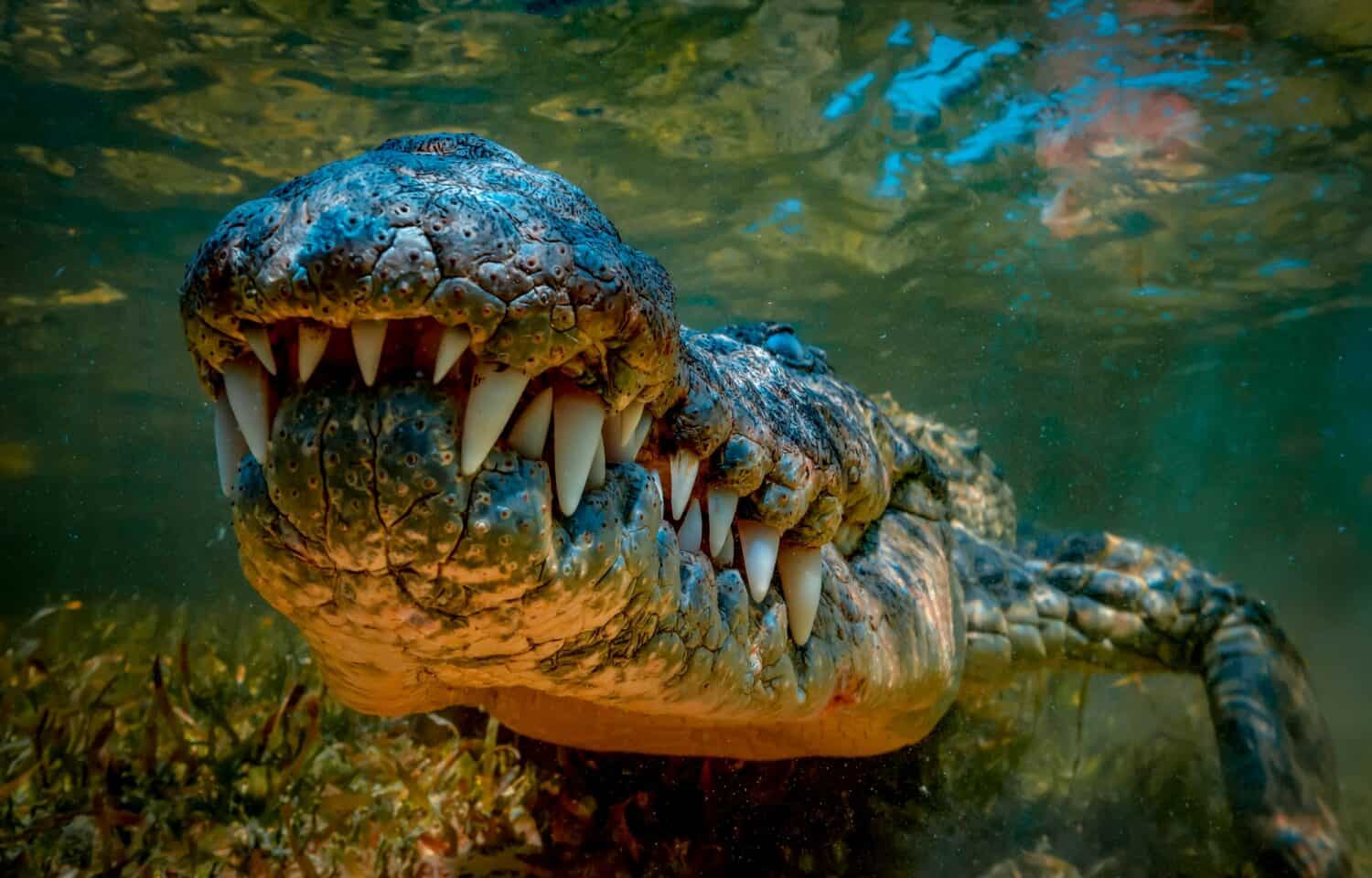
Yes, crocodiles are quite aggressive animals. This starts from a very young age, as many baby crocodiles will display aggression early on. Crocodiles are even known to attack humans and other beings unprovoked, meaning you don’t need to do anything but exist in the same area as a crocodile to become its next meal.
As mentioned earlier, crocodiles are especially territorial creatures and will defend their areas at all costs. Some signs of aggression include tail twitching and lunging toward potential victims.
Smart Investors Are Quietly Loading Up on These “Dividend Legends” (Sponsored)
If you want your portfolio to pay you cash like clockwork, it’s time to stop blindly following conventional wisdom like relying on Dividend Aristocrats. There’s a better option, and we want to show you. We’re offering a brand-new report on 2 stocks we believe offer the rare combination of a high dividend yield and significant stock appreciation upside. If you’re tired of feeling one step behind in this market, this free report is a must-read for you.
Click here to download your FREE copy of “2 Dividend Legends to Hold Forever” and start improving your portfolio today.
Thank you for reading! Have some feedback for us?
Contact the 24/7 Wall St. editorial team.


